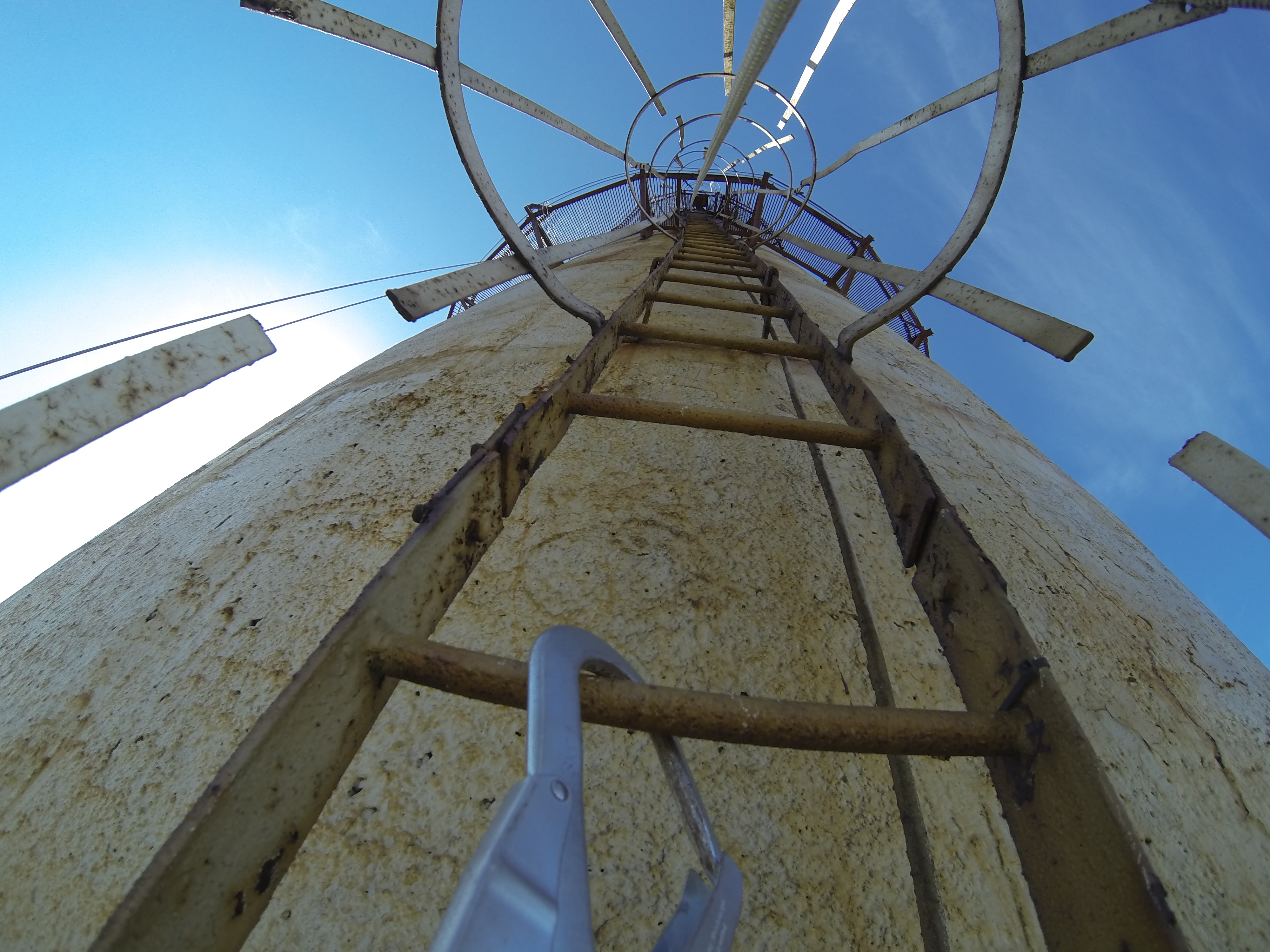So what’s up with fixed ladders?
As you’ve probably heard, there’s been a lot of talk about OSHA’s new rule on Walking-Working Surfaces and Personal Protective Equipment and its relation to fixed ladders. So what exactly is happening? And what do you need to do?
While there are many facets to the rule, we want to bring the focus to the ladder aspect. Cages specifically. The new rule will require fixed ladders over 24ft be equipped with a personal fall arrest system to arrest a worker’s fall, as well as phase out cages as an option for fall protection by November 18, 2036. But why exactly do we want our ladders like we want our chicken (cage free)? Well, there has been wide recognition that cages do little to protect the worker when they fall since it’s the worker’s body that arrests the fall. Cages lead to workers getting tangled up in them after a fall, and they can make rescues quite difficult. Adding a fall protection system not only eliminates both of these issues, but it also “incorporates advances in technology, industry best practices” (USDOL), and provides you with a more cost-efficient way to protect you and your workers.
“Given the Choice Between a Cage or a Personal Fall Arrest System, I’d Choose the “Ladder””
This revised ruling, printed in the Final Register as of January 17th, 2017, has actually been in the works since 1973. Over that time, OSHA gathered and analyzed data on walking-working surface hazards and methods to prevent and eliminate them. Many of you are already in compliance with varying aspects of the new rule…unless you have cages (they’re always getting in the way!). While 20 years might sound like a lot of time, you should consider the age and quantities of your ladders. OSHA estimates a ladder’s life span is roughly 20 years, hence the time frame of the new regulation going into effect, and if you have 1,000 ladders under your company’s name, you’ll be needing all the time you can get!
SOURCE:
